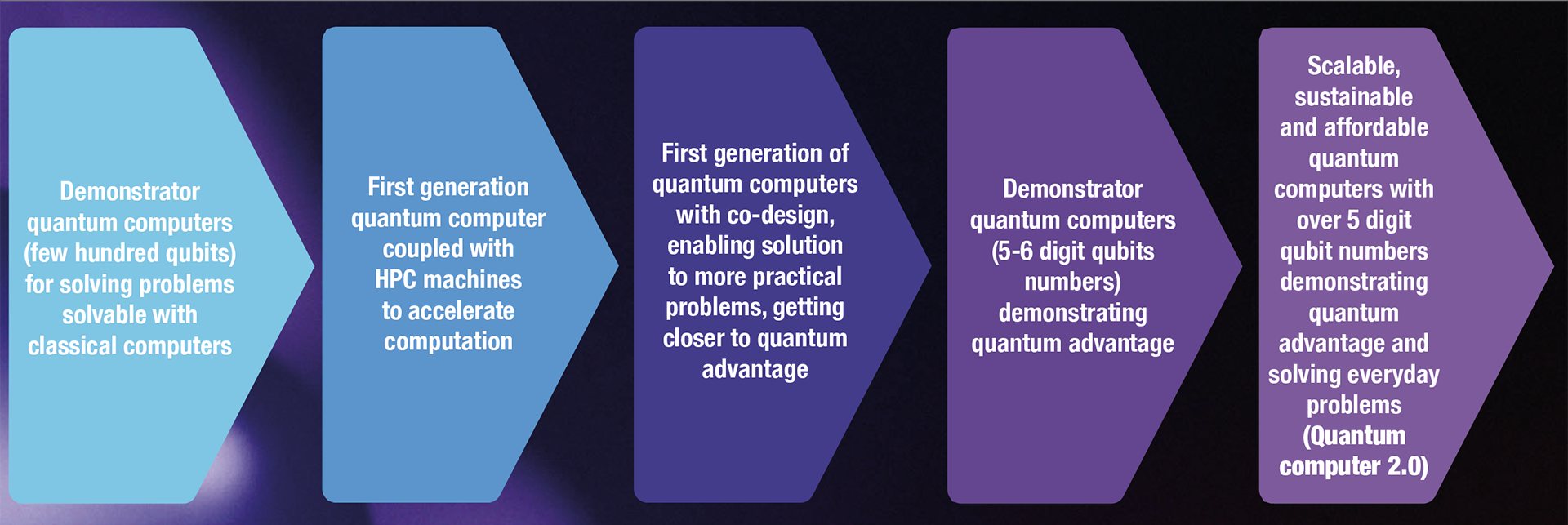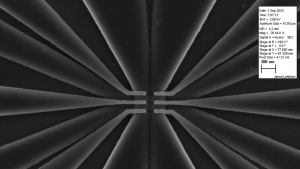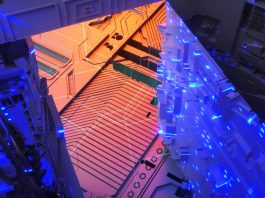As the era of quantum advantage draws closer, it’s time to shift focus toward scalable, affordable, and productised quantum computers.
Achieving quantum advantage is not the be-all and end-all of quantum computing. As the era of quantum advantage draws closer, with more powerful quantum computing machines, the focus of the quantum ecosystem must shift from scientific experiments and demonstrations toward scalability.
Researchers around the world are tackling the scale-up of quantum computing from different angles, but Finland-based quantum startup SemiQon believes the next era of quantum computing will be achieved through semiconductor-based quantum hardware.
Building the million-qubit era
Quantum is coming, and across industries huge expectations are directed at its eventual applications – and for a good reason. In the years and decades to come, quantum computing is expected to solve increasingly complex real-world problems through an array of applications. As researchers, ecosystems, and companies around the globe lay out their ambitious visions for quantum computing, it is also necessary to be open about the problems that need to be solved to unleash the full potential of quantum.
After decades of research and breakthroughs, realising the potential of quantum is no longer a scientific question. Dr Himadri Majumdar, CEO and co-founder of SemiQon, instead believes the priority is building quantum hardware that responds to the challenges currently slowing down the development of quantum computers globally – sustainability, scalability, and affordability.

Tackling challenges with scalability is the primary focus of SemiQon’s technology. First-generation quantum computers have achieved impressive feats, solving computationally demanding but highly specific problems related to pharmaceuticals, logistics and materials design.
However, those problems have, in fact, been solved – and in some cases, to an even greater complexity – by classical computers. To fully demonstrate the capability of quantum computers that outpaces classical computers, the so-called quantum advantage has to be reached. Big, demonstrator-level quantum computers might be able to reach this goal in the near future, but that is far from being the finish line for quantum.
We are already seeing the progression all around the globe. Following the first demonstration of successful operation of quantum computing, the next milestone is to integrate quantum computers with high-performance computing (HPC) environments, better known as supercomputers.
Such integration will enable the first demonstration of the benefits of quantum computing when coupled with classical computing. This will be followed by further advancement in quantum computing capacity, eventually leading to the era of scalability of quantum computers.

Hardware drives the scale-up of quantum computing
As research into different aspects of quantum technologies continues, the quantum ecosystem as a whole could benefit from starting to shift its focus toward what Dr Majumdar refers to as the ‘million-qubit era.’
Instead of viewing developments in quantum technologies primarily as scientific experiments, the next stages of quantum should be approached as difficult – but perfectly solvable – engineering challenges. The real challenge with the ‘quantum computer 2.0’ is no longer demonstrating that something can be done, but that it can be done in a sustainable, scalable, and affordable manner.
All forms of computation depend on two elements – hardware and software. It has been the prevailing thought within the classical computing industry, that business value lies more on the software than the hardware components. That is accurate if we look at the business volume and number of companies generated by software compared to hardware.
However, the strategic value of hardware has been overlooked for too long – a lesson that many have learned the hard way with the chip shortage over the last few years.
To avoid further dependence on outside supply of chips and risk finding themselves in a vulnerable position down the line, policy makers on both sides of the Atlantic have been hard at work drafting chips initiatives to support local semiconducting industries.
In Europe, the Chips Joint Undertaking (Chips JU) has been established following the signing of the Chips Act in September 2023. Securing money and efforts is important, but when it comes to classical chips, western nations are stuck playing catch-up with the Far East.
The opposite is true for quantum chips. With the right policies and investment, Europe and the US can maintain their leading position in quantum components globally, and make sure to position themselves favorably in the race where success will be largely dictated by scalable qubits. Systematic investment in infrastructure supporting the scaling of quantum technologies, from lab to pilot to high volume foundry, would go a long way to maintain European and US leadership.
The convenient marriage of semiconductors and quantum
A big part of overcoming the current limits of quantum hardware concerns the materials used to build quantum chips.
Both superconductors and semiconductors come with their own set of challenges. SemiQon’s team is confident that its silicon-based technology will make it possible to fabricate quantum processors in a way that supports scaling up manufacturing efficiently, while also lowering costs. This solution builds on the technological development and know-how of semiconductors, and benefits from existing infrastructure and industry.
The silicon quantum chips will also enable the quantum computer to operate at warmer temperatures – thus requiring only a fraction of the energy needed for alternative solutions.
SemiQon’s technology in brief
- SemiQon develops silicon-based quantum processors to make future quantum computers more affordable, scalable, and sustainable.
- SemiQon’s scalable quantum processing units (QPUs) use semiconductor quantum-dot qubits and cryogenic ultra-low dissipation CMOS hardware.
- The technology expands upon the initial demonstration of monolithically integrated on-chip quasi-dissipationless cryogenic multiplexers, based on proprietary CMOS technology and devices with extremely low noise levels.
- The ultra-low-charge-noise background of quantum-dot devices at relatively higher temperatures, above one kelvin, was demonstrated and served as the foundation for the company’s goals. This was done using the same process to fabricate qubits and CMOS circuits on the same chip.
- The company works closely with the quantum ecosystem from research groups to full-stack companies and aims to bring scalable quantum computing solutions closer to reality.
- SemiQon operates in the Otanano facilities for Applied Micro and Nanotechnology in Espoo, Finland’s pilot-level manufacturing facility and has its characterisation laboratory in the premises of Metrology Institute of Finland, MIKES.
Not only can the marriage of quantum and semiconductors provide an effective way to scale up quantum computers, boost manufacturing, build resilience, and support technological sovereignty, it can also have a long-term impact on the semiconductor industry. If standard semiconductor manufacturing is used to manufacture quantum processors, the investments that are made on infrastructure now will give Europe and the United States a strong advantage, and leverage, for the future of the computational hardware industry.

As the manufacturing of quantum computers and components accelerates, new opportunities will develop and drive business for existing semiconductor companies. At the same time, increasing specialisation within the quantum industry will enable new companies to emerge to respond to the new requirements and increased demand.
SemiQon company facts
- A spin-out from VTT Technical Research Centre of Finland.
- Secured €1.9m in funding by February 2023. Lead investor Helsinki-based deep tech investor Voima Ventures.
- Founders Himadri Majumdar, PhD (CEO), Janne Lehtinen, PhD (CSO), Mika Prunnila, PhD (CRO), and Markku Kainlauri (Lead, Fabrication) have all previously worked at VTT and have combined experience of over 60 years in microelectronics and quantum technologies.
- Eight member team (Oct 2023)
- €1.2m Business Finland deep-tech grant
funding - €2.5m European Innovation Council Transition grant funding together with QBLOX (NL)
Exploration drives innovation, and vice versa
As so often with emerging and novel technologies, predicting their impact is an exercise for the imagination. However, considering what we already know about quantum phenomena, we can expect that the million-qubit era of quantum computing will expand our idea of what is and is not possible.

As we discuss future possibilities and potential stumbling stones, it is important to keep in mind that developments in quantum are not separate from other realms of scientific discovery and human curiosity.
During the 20th century, the world got to witness how exponential growth in computing power went hand in hand with other groundbreaking discoveries, such as space travel and the onset of integrating artificial intelligence into our daily lives. With space travel and exploration gaining new momentum in recent years, it is not hard to imagine that quantum computers could play a role in exploring the next frontier of space.
Ideally, good news and new milestones from the world of quantum technologies will encourage businesses, researchers, and governments to proactively seek out questions that quantum computers could one day answer and allocate resources accordingly.
Exploring the opportunities of this previously unattainable computing power should not be left to quantum scientists alone. In fact, the quantum ecosystem will greatly benefit from engaging existing industries, potential end-users, and interested policymakers in dialogue to help build technologies that could solve problems, add value, and are easy to adopt.
Realising the promise of quantum requires strategic investment into both new innovations and the existing semiconductor industry. The good news is that success in scaling up quantum will provide endless opportunities for industry and a competitive edge on the global scale.
Please note, this article will also appear in the sixteenth edition of our quarterly publication.









